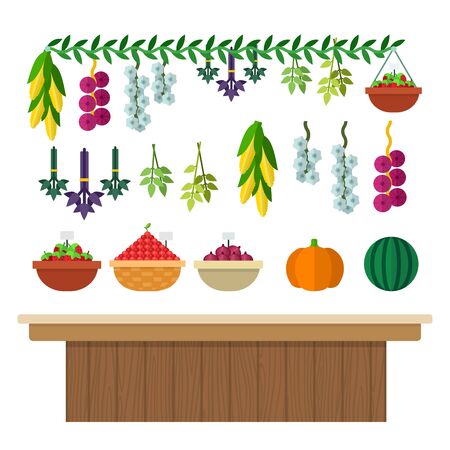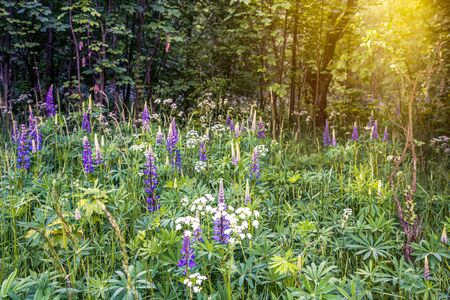Introduction to British Gardens and Native Herbs
British gardens, known for their structured beauty and seasonal diversity, have long served as more than just ornamental spaces. These verdant sanctuaries are deeply rooted in the country’s history, with native herbs flourishing alongside traditional floral displays. From quaint cottage plots to expansive country estates, the cultivation of local botanicals has been a cornerstone of both garden design and community well-being across the UK. Historically, herbs such as nettle, chamomile, yarrow, and comfrey were integral not only for culinary purposes but also for their medicinal properties. Local communities relied on these easily accessible plants to address various health concerns, including inflammation, centuries before modern pharmaceuticals emerged. This enduring relationship between Britons and their gardens underscores a rich tradition of using native flora for health maintenance—a practice that continues to resonate today as scientific research validates many traditional uses. As we explore the role of wild herbs in managing inflammation, it becomes clear that the humble British garden is a living repository of natural remedies shaped by generations of empirical knowledge and cultural heritage.
2. Understanding Inflammation: A Health Perspective
Inflammation is a natural and essential response of the body’s immune system, designed to protect against injury and infection. However, when inflammation becomes chronic, it can contribute to a host of health concerns. In the context of British gardens and wild herbs, understanding the mechanisms of inflammation provides a foundation for using local botanicals effectively.
What Is Inflammation?
Inflammation is the body’s process of responding to harmful stimuli, such as pathogens, damaged cells, or irritants. This response involves increased blood flow, immune cell activation, and the release of signalling molecules called cytokines. Acute inflammation is typically short-term and resolves once healing occurs. Chronic inflammation, on the other hand, persists over time and may underlie conditions such as arthritis, cardiovascular disease, and certain autoimmune disorders.
Common Triggers of Inflammation
| Trigger | Description |
|---|---|
| Poor Diet | High intake of processed foods, refined sugars, and unhealthy fats |
| Environmental Factors | Exposure to pollution, allergens, or toxins |
| Infections | Bacterial, viral, or fungal pathogens prompting an immune response |
| Stress | Chronic psychological stress leading to hormonal imbalance |
| Lack of Physical Activity | Sedentary lifestyle contributing to systemic inflammation |
Why Managing Chronic Inflammation Matters
Research published by UK-based institutions highlights that chronic inflammation is linked with increased risk for long-term health issues including type 2 diabetes, heart disease, and neurodegenerative conditions. Reducing inflammation is therefore crucial not only for preventing illness but also for promoting overall wellbeing—key factors in living a healthier life in the British Isles. Integrating local botanicals from British gardens and wild spaces offers a sustainable strategy for supporting the body’s anti-inflammatory pathways while honouring regional biodiversity.

3. Key British Herbs with Anti-Inflammatory Potential
Britain’s temperate climate fosters a remarkable variety of herbs and wild botanicals, many of which have been traditionally used to soothe aches and manage inflammatory conditions. Recent scientific investigation has begun to shed light on the active compounds behind their effects, supporting their inclusion in modern wellness routines.
Nettle (Urtica dioica)
Commonly found along hedgerows and in shaded garden corners, nettle is rich in phenolic compounds, flavonoids, and carotenoids. Research highlights its ability to inhibit pro-inflammatory cytokines, thanks to its high content of bioactive polyphenols such as caffeic acid and chlorogenic acid. Clinical trials indicate that nettle extracts can reduce symptoms of osteoarthritis and other inflammatory disorders, making it a valuable addition to herbal infusions or as a cooked green.
Elderflower (Sambucus nigra)
Elder trees grace many British gardens and countryside paths, with elderflowers prized for both culinary and medicinal purposes. The blossoms contain quercetin, rutin, and phenolic acids, all recognised for their antioxidative and anti-inflammatory properties. Laboratory studies suggest elderflower extracts can modulate inflammatory pathways by reducing nitric oxide production and suppressing COX-2 enzyme activity—mechanisms relevant to managing chronic inflammation.
Willow Bark (Salix alba)
A native tree commonly seen along riverbanks and parklands, willow bark has a well-documented history as ‘nature’s aspirin’. Its main bioactive constituent, salicin, is metabolised into salicylic acid in the body—a precursor to modern aspirin. Randomised controlled trials confirm willow bark’s efficacy in alleviating lower back pain and joint discomfort by inhibiting prostaglandin synthesis, thus reducing inflammation at its source.
Chamomile (Matricaria chamomilla)
This gentle herb is a staple of British cottage gardens. Chamomile flowers are abundant in apigenin, bisabolol, and chamazulene—compounds shown to exert anti-inflammatory effects through suppression of inflammatory mediators such as interleukin-6 (IL-6) and tumour necrosis factor-alpha (TNF-α). Human studies corroborate chamomile’s traditional use for gastrointestinal complaints linked to inflammation.
Scientific Support and Integration
The growing body of evidence supports these local botanicals not only as historical remedies but also as scientifically backed options for mild inflammation management. Whether brewed into teas or incorporated into topical preparations, these British herbs offer accessible ways to support wellbeing using ingredients rooted in local landscapes.
4. Integration of Wild Herbs into Everyday British Life
British gardens have long been a source of culinary and medicinal inspiration, with wild herbs such as nettle, dandelion, elderflower, and yarrow forming part of the traditional landscape. The integration of these botanicals into daily life not only honours local heritage but also provides accessible options for inflammation management. Here are practical ways to incorporate these herbs into modern routines, blending time-honoured practices with contemporary British tastes.
Traditional Recipes Revisited
Many wild herbs found in British gardens have a rich history in classic recipes. For instance, nettle soup has been enjoyed for centuries, while elderflower cordial remains a beloved summer refreshment. Below is a table highlighting traditional uses alongside simple preparation suggestions:
| Herb | Traditional Use | Modern Preparation Tip |
|---|---|---|
| Nettle | Nettle Soup | Add young nettle leaves to smoothies or sauté as spinach substitute |
| Dandelion | Dandelion Tea | Mix roasted dandelion root in coffee blends for a nutty flavour |
| Elderflower | Elderflower Cordial | Infuse into gin cocktails or drizzle over desserts |
| Yarrow | Yarrow Infusion for teas | Combine with chamomile for a calming evening brew |
Modern Adaptations in British Culinary Culture
The resurgence of interest in botanical ingredients within British cuisine has seen wild herbs featured in everything from artisanal breads to innovative salads. Chefs and home cooks alike now use these botanicals not only for their anti-inflammatory properties but also to enhance flavour profiles.
Infusions and Tisanes
Herbal infusions are simple to prepare and can easily become part of one’s daily hydration routine. Try steeping fresh yarrow or elderflower in hot water for a soothing tisane, or experiment by blending several wild herbs according to personal taste preferences.
Culinary Incorporation: A Practical Approach
- Baking: Incorporate finely chopped nettle or dandelion greens into savoury scones or bread doughs.
- Salads: Add young leaves from garden-grown herbs to mixed salads for both colour and nutritional benefit.
- Pesto and Sauces: Substitute part of the basil in pesto recipes with wild greens like sorrel or chickweed.
- Savoury Stews: Simmer yarrow or wild garlic in traditional stews and casseroles to impart subtle herbal notes.
Sourcing and Safety Tips for Home Use
If harvesting from your own garden or the wild, ensure correct identification of herbs to avoid confusion with potentially toxic plants. Opt for unsprayed areas away from roadsides, always wash thoroughly, and consider consulting local guides or horticultural societies if uncertain.
5. Safety, Sustainability, and Foraging Ethically
In the context of British gardens and wild herbs, ensuring safety and sustainability is paramount when harnessing local botanicals for inflammation control. Responsible foraging not only protects individual health but also safeguards the delicate balance of native ecosystems.
Responsible Foraging Practices
Before gathering any wild herbs, it is essential to correctly identify plant species using reputable field guides or expert advice. In Britain, some plants closely resemble toxic counterparts, such as hemlock and cow parsley; thus, misidentification can lead to serious health risks. Always harvest from clean environments—avoiding roadside verges or areas treated with pesticides—and ensure you have permission to forage on private land or protected sites.
Safe Consumption Guidelines
Once harvested, thoroughly wash all botanicals and introduce new herbs gradually to monitor any adverse reactions. Be particularly mindful of allergies and potential interactions with prescribed medications. It is advisable to consult a healthcare professional before incorporating wild herbs into your wellness routine, especially if you have existing medical conditions or are pregnant.
Sustaining Local Ecosystems
Foraging ethically supports biodiversity by adhering to the “leave no trace” principle: take only what you need and never uproot entire plants. Follow the one-in-twenty rule—harvest just one out of every twenty plants in a given area—to allow populations to regenerate naturally. Avoid picking rare or protected species by referring to resources like the Wildlife and Countryside Act 1981, which outlines legal restrictions on collecting certain native flora.
Supporting Community Initiatives
Engage with local conservation groups and participate in community gardens to deepen your understanding of sustainable practices. By doing so, you contribute to the stewardship of Britain’s natural heritage while responsibly enjoying the anti-inflammatory benefits of native botanicals.
6. Conclusion: Embracing Local Botanicals for Health
British gardens and wild landscapes are rich repositories of botanicals that have been valued for generations in supporting wellbeing, particularly in managing inflammation. Scientific research increasingly supports the traditional uses of herbs such as chamomile, nettle, rosemary, and elderflower, demonstrating their potential to modulate inflammatory responses through bioactive compounds like flavonoids, polyphenols, and essential oils. By integrating these local plants into daily routines—whether as herbal infusions, culinary additions, or topical preparations—individuals can access natural anti-inflammatory benefits grounded in both heritage and emerging evidence.
A rational, data-driven approach remains essential when considering the use of British garden and wild herbs for health. While anecdotal traditions offer valuable insights, prioritising botanicals with substantiated efficacy and safety profiles ensures the best outcomes. Recent UK-based studies and systematic reviews underscore that local herbs are not just culturally significant but also scientifically promising for inflammation control. For those seeking practical and evidence-based solutions, harnessing these botanicals offers a holistic complement to conventional therapies. Ultimately, embracing the wealth of British flora—while staying informed by up-to-date research—empowers individuals to make informed choices in their pursuit of better health.

